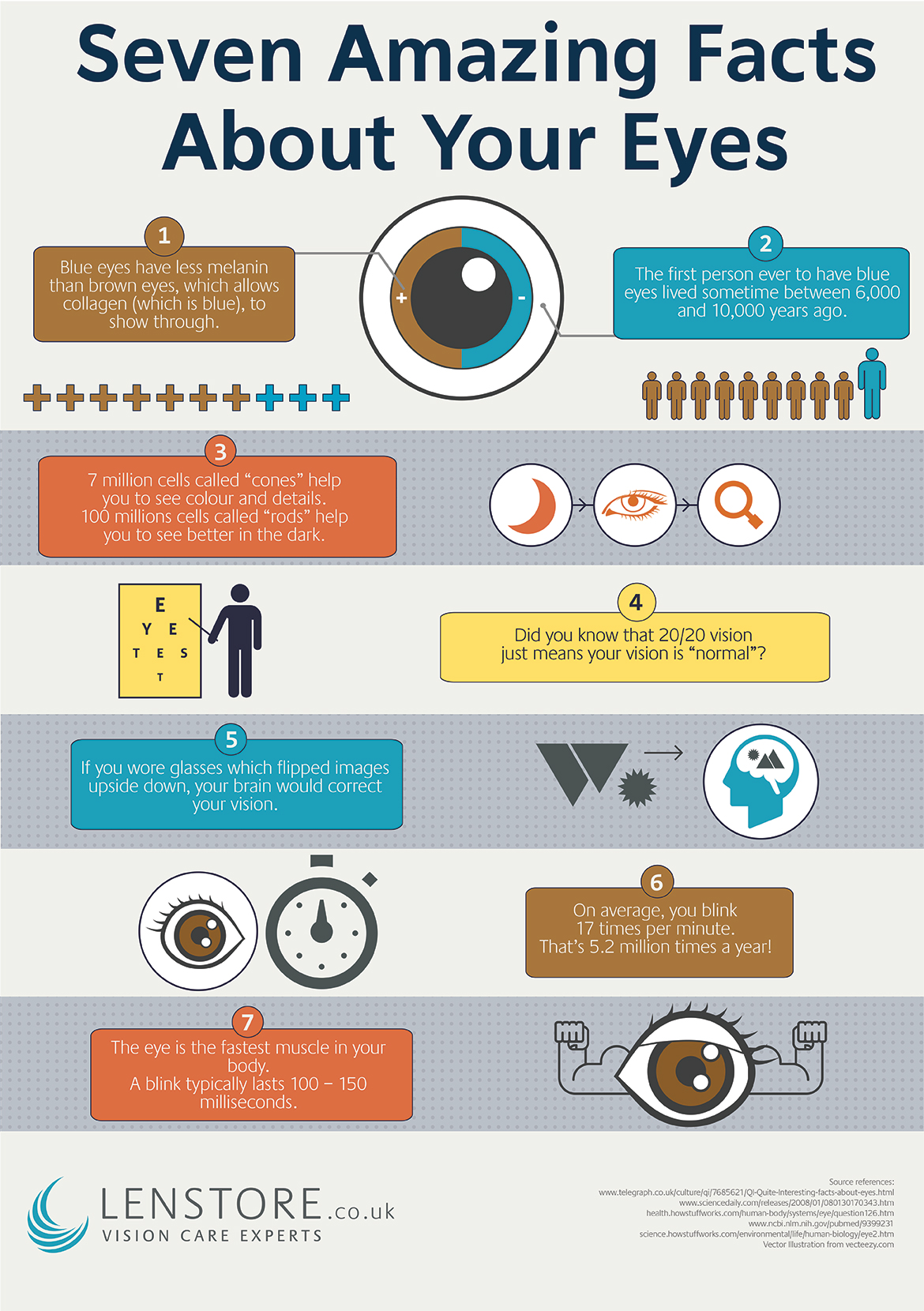
Have you ever wondered what might happen if you were to wear a pair of glasses that would flip your vision upside-down? Or why your eye colour is the way it is? Maybe you have, or maybe you haven’t, but it’s quite fascinating nonetheless. We’ve created an infographic below with some of the most amazing facts about your eyes. If you’d like to know a little more about each one, read on further below!

1. The amount of melanin in your iris determines your eye colour
The more melanin that you have in your iris, the darker your eyes will be. This is because melanin is a dark brown pigment. Blue eyes contain far less melanin than dark eyes, which allows a blue substance called collagen to show through. Interestingly, melanin also determines the colour of your skin and hair!
2. All blue-eyed people share a common ancestor with every other blue-eyed person in the world!
The first ever blue-eyed person was born with a gene that could not produce enough melanin to create brown eyes, resulting in a unique DNA sequence which has been transmitted to every other blue-eyed person since. Despite them living between 6,000 to 10,000 years ago, they can still be traced back to this single ancestor.
3. Your eye contains over 107 million cells that are sensitive to light
There are two types of cells that are located in your retina (which is at the back of your eye) called ‘rods’ and ‘cones’.
There are 100 million light-sensitive rods in our eyes that can’t recognise colours, but they help us to see better in the dark. The other 7 million cells are called cones and give us the ability to see colours and details.
So how do these cells work together to help you see? Well, it all happens thanks to a chemical reaction which occurs just a few trillionths of a second after light has come into contact with the rods and cones. This reaction then triggers an electrical impulse which, when transmitted to your brain, processes the information and allows you to see.
4. If you have 20/20 vision, it just means you have ‘normal’ eyesight
It is often thought that if you have 20/20 vision, you have perfect eyesight. In reality, this is simply an American term used for visual acuity measurements. According to opticians, it just means what a person should “normally” be able to see when looking at an eye exam chart from a 20-feet distance.
You may be surprised to learn that 20/20 vision isn’t the best quality vision you can have. Some people with exceptional eyesight have 20/10 vision, which in a way, is twice as good as 20/20!
5. If you wore a special pair of glasses that flipped images upside down, your brain would correct your vision
Your brain processes all the information that your eyes collect, which allows you to see. If you were to wear a pair of special glasses that flipped everything you saw upside down, over time your brain would learn to process the information differently so that you would see things the right way again.
Please don’t try this at home though. It could take several weeks for your brain to adapt and you would see everything upside down again after taking the glasses off!
6. On average, you blink 17 times a minute and over 5 million times in a year!
It’s something that we all do every day, but have you ever thought about how often you blink?
It is said that on average, you blink around 17 times a minute. With this figure in mind, you’re likely to have blinked around 5.2 million times over the course of a year. The amount of times you actually blink does vary on what you are doing, however. For example, if you’re talking to someone, you tend to blink more often; but if you were reading, you’re likely to blink less (which is why your eyes become tired and dry).
7. The muscle that controls your eyelids and the ability to blink is the fastest muscle in your body
The average blink tends to last between 100-150 milliseconds. Blinking is important to our eye health as each time we blink, our eyelids spread a mixture of oils and mucous secretions across the surface to keep our eyes moist also to remove any dust and debris.
